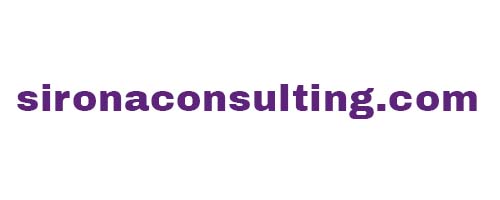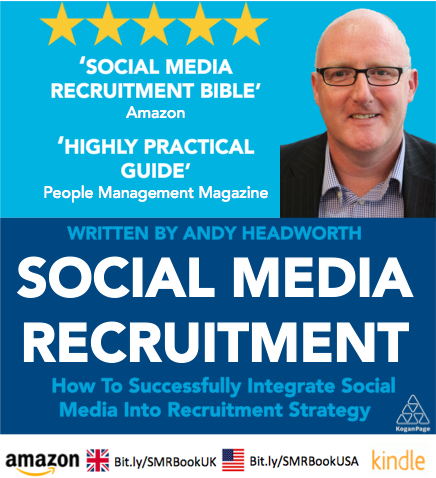7 Ways Social Media Can Help Build Your Talent Pipeline
One of the best examples of procrastination within recruitment and HR is the creation, development and management of talent pipelines and talent pools or whatever you want to call them. Every company has them in some shape or form, but rarely are they cultivated or developed to a level that they can become really useful on a number of different levels. Most of the time they are just a database - either an excel spreadsheet, an email list, a CRM or recruitment system list of current /past applicants or even just a series of tags on the HRIS system. There is nothing wrong with any of these if that is your objective and/or they are the expectations of your limitations (primarily, resources and time).
However, what we say to hiring mangers and clients is of course completely different. They want you (as the recruiter) to have pipelines of talent (for them) and expect it to be available the moment they give you new role or requirement to find someone for.
The reality is a a little different, as most recruiters and HR people know.
The reason for this post, is that over the last few weeks I have been asked to help some clients better understand how social media can help them to build pipelines of ‘better engaged’ talent. With one of them I was even asked to sit down with their hiring manager and explain why the recruitment team couldn’t create an immediate pipeline of people, that knew about and were interested in their company. It turned out more of a communication issue around managing expectations, but it was resolved easily enough. While there I gave the hiring manager a simple analogy which helped him understand that effective pipelines (to his definition) can take some time to build. Building talent pipelines from scratch and gardening are closely aligned:
Imagine you are a gardener. You are starting with a fresh new patch of earth that you want to grow your crop of vegetables on. You first dig it over and add manure to provide nutrients and goodness to the soil to encourage growth. Then you select the vegetables for the specific time of year you want them - e.g. salad crops for summer and root vegetables for winter. When you have planted them you then feed, nurture and water them, and you manage the predators that also want to munch on your newly growing crops. Your new crops do take time to grow but there are times certain crops just don’t work out and simply don’t grow. Then when it comes to the time you want to use your produce they are ready for picking and eating. And if you have ever grown your own vegetables you will know that they always seem to taste better because you have grown them yourself.
Of course if you want to short circuit this whole process and you want your vegetables quicker (or can’t be bothered to grow them yourself), you simply go and buy them in a supermarket, and take your chances with what is on offer there.It takes time, skill and effort to give you the crop you want, when you want it.
If you then align this to developing talent pipelines, then the process is not too dissimilar. Understand your objectives for building a talent pipeline in the first place, identify the people you want to target and add them to whichever system you are going to use to develop trust and build a relationship with them. Sharing stories, great content and experiences with them will then further nurture your relationship with them, which will help fend off approaches from all but the very persistent recruiters. Then when your company has the required positions available, the talent you have been nurturing is ready to have a serious conversation about joining your company. This all takes time, but hopefully it is worth all the effort. And of course if you want to bypass this whole process, you can get your cheque book out and acquire talent from a recruitment agency.
So how can you use the power of social media to help you build and develop your talent pipelines?
There are of of course many different social networks that you can do this with, and different industries and sectors will respond differently according to what you are recruiting for. For example, you will find it hard to use LinkedIn to successfully engage UX designers/developers, whereas Twitter would be more effective to do so.
Assuming you know what talent you want to focus on in the first place, here are seven ways you can use social media to build and nurture your talent pipelines:
1. Find out which social networks your target talent regularly use.
Rather obvious I know, but making assumptions on this will only lead to failure. Begin by creating personas of your target talent, and then use some different tools to identify where your target audience is. Remember I am using the words ‘regularly use’ here - I don’t mean just ‘present on’. LinkedIn is an example of this, as many people have a profile on that network, but don’t visit the site often or even have a primary email address associated with it, meaning your response rates will be low when you try to engage them.
2. Set objectives and timelines
This is so important to do from the beginning. If you an in-house recruiter then this will be closely aligned to the recruiting plans and direction your company is taking, so will need to me mapped accordingly. Hopefully you have relationships with the business leaders/hiring managers that will provide you with this essential information. This will then give you timelines as well as talent objectives. Alternatively, if you are always recruiting certain skill sets then that makes it obvious what you need to focus on.
Recruitment agencies are a little different, as they will likely focus on sectors/industries, with consultants having open timelines but with objectives of becoming seen as expert and knowledgeable in those areas, therefore building continuous pipelines.
Remember: different social networks could (and should) have different objectives.
3. Create your content hub
As part of the nurturing process you are going to want to share information about you, your company, your sector, the great things your employees are doing etc. What are you going to use for this? Hopefully you have a great career site full of good content - articles, video’s, interviews pictures etc As an addition (or a replacement if you haven’t got a career site you are proud of) utilise some social networks - create an engaging LinkedIn company page, Glassdoor company profile, Facebook Page, Instagram account, YouTube Channel, Pinterest boards and maybe tie this altogether in a blog site, where you can feed this all these in to the content there. When using the different sites, ensure that all the branding and logos are consistent. Each of the sites mentioned will have their own mechanism for developing a following, one really important point to make when people follow you on them, is to also find out where else they are socially. A quick Google search will help with this as it is common for social media users to use the same username across different social networks. Different social networks are easier than other to engage on, so try and find them where it is easiest for you to engage them better.
4. Managing your communities
Ideally you will be using a CRM tool like Avature, Hubspot, Nimble, Salesforce, Firefish or Tribepad etc to manage and engage your talent pipelines. If you are just focusing on the social aspect, then you could be using a closed LinkedIn Group, a closed Facebook Group or a closed Google+ community (but you would have of course have to invite people into your groups). Or you could identify groups of talent online and add them to a group/list/folder to track, engage and monitor them - then as you build a relationship move them across into your private communities. For example, if using LinkedIn Recruiter, you could build a project folder and use the star function to track their activity. Or you could create a private Twitter list and add all your target talent to your list. Then create a column in your social media dashboard (such as Hootsuite, Falcon Social or Tweetdeck ) and add this list to it to allow you monitor and engage all the talent on you have put in Twitter list.
5. Share consistent content
Your that you create, curate and share content needs to be interesting, relevant and timely (delivered when they will see it and reed it), and it needs to be delivered consistently to your audiences. You should share different types of content - employee generated content can be an excellent part of your strategy. Obviously original content posted directly within to your social media communities would be the ideal way, but with time being a precious resource for everyone in recruitment and HR, then you can use a level of automation to ensure regular distribution. You can use many different tools as highlighted in this recruitment content marketing post. If for any reason you are having issues with no-one engaging your content, then first check out why no-one is reading your social media content, as this will give you some help in identifying why.
6. Engage and communicate
Don’t just focus on broadcasting content across your communities - that is not going to build relationships with your talent pipeline. Yes it will create brand awareness and maybe some loyalty but you need to be having one to one conversations and communication. You may find that initially, mobile apps like WhatsApp, Facebook Messenger, IMessage, WeChat or Hangouts are great ways to initiate conversations and start to develop those early relationships with people. Maybe you prefer Skype or a video chat, but ultimately the channel doesn’t matter, the important thing is that you are taking the conversation to the next level.
If you are starting form cold and need to get people’s attention within social media, then do things like share their content, comment and like their posts, add people to Twitter Lists and Google Circles (they get notified you are doing this), and engage with them in chats/conversations. Doing this a number of times will put you on a person’s radar - it is just up to you to ensure you take the next step.
7. Take it offline
This is what you should be targeting yourself with - move the conversation from the online social world and make it real, meeting your talent pipeline offline. This may happen naturally at events, conferences and meet ups, but there is a lot to be said for investing the time drinking tea,coffee, beer or wine (your choice!) with your target audience. Nothing can replace the face to face personal interaction. Social media is a superb introducer, and it is a way that I have met many people around the world. And when you meet them face to face, the benefit from originally connecting on social media is that you feel you already know each other.
There is no coincidence that the best recruiters are fantastic face to face networkers. They fully understand the power of relationships and make sure they are always cultivating them.
Working closely with your clients - whether they be hiring managers or client companies - will always be the best way learn and gather information, to aid you in building your talent pipelines. It still is a challenge for many recruiters to gain this level of trust and access, but the closer you are to the business the better the results they will get from you.
Later this year, I will be running a series of workshop days for Recruiters and HR professionals involved in recruiting. They will be full of practical advice, case studies and actionable content, covering all aspects of social media recruiting and recruitment content marketing. Details and dates across the UK will be published very soon. Register your interest today by sending Andy an email




Pingback: 7 Ways Social Media Can Help Build Your Talent ...()
Pingback: UK Recruiter » How to seduce candidates and disrupt your recruitment business - Notes from the #RecHangout()